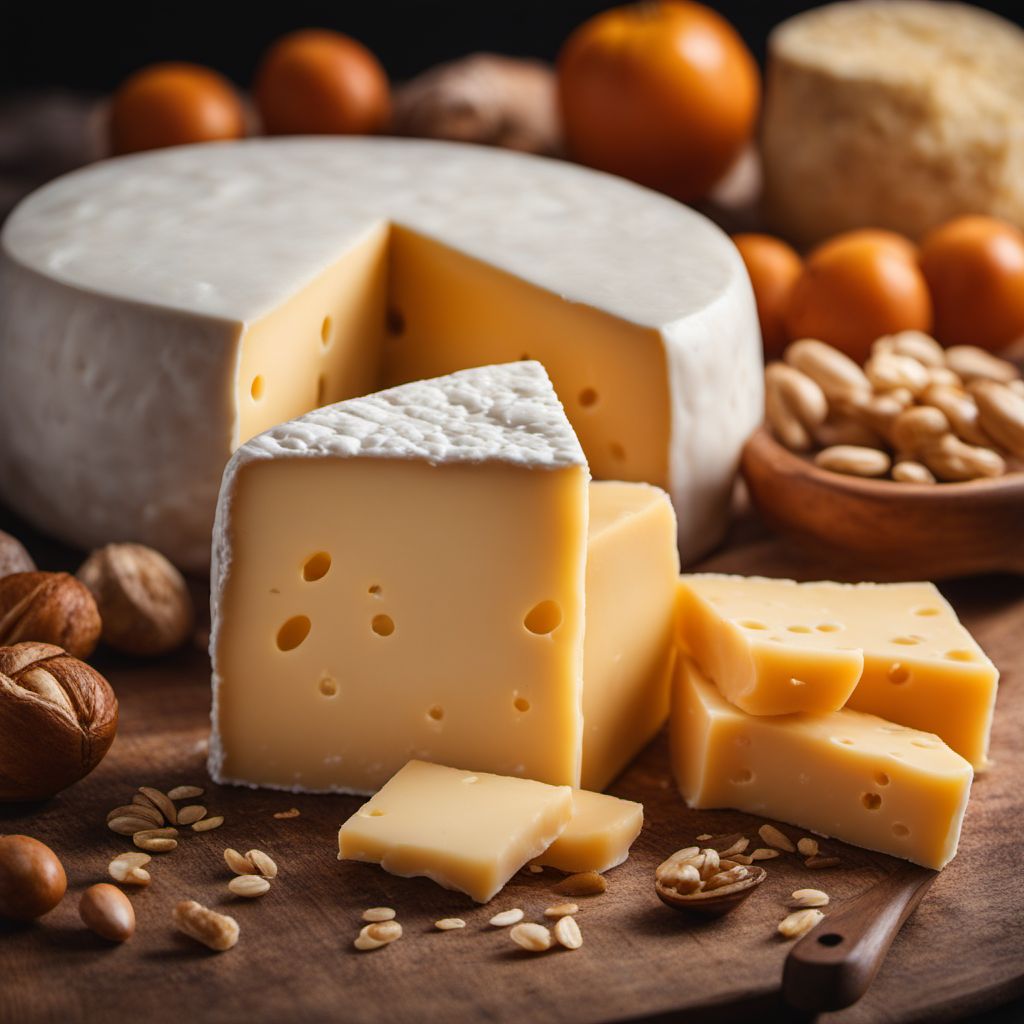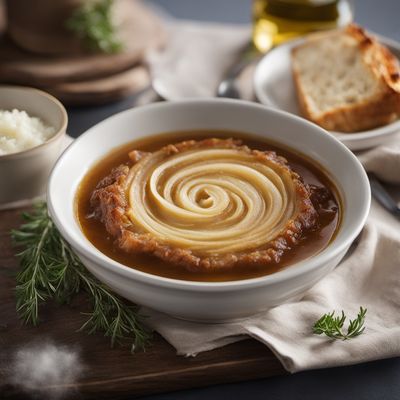
Ingredient
Cheese, gruyere
Gruyere: The Quintessential Swiss Cheese
Gruyere cheese is a semi-hard cheese with a pale yellow color and a firm yet pliable texture. It boasts a rich, nutty flavor with subtle hints of sweetness and a slightly earthy aroma. Its versatility allows it to be enjoyed on its own, melted in dishes, or grated as a topping.
Origins and history
Gruyere cheese originated in the Gruyere district of Switzerland, where it has been produced for centuries. The cheese holds a Protected Designation of Origin (PDO) status, ensuring that it is made according to strict regulations and traditional methods. Gruyere cheese has become an integral part of Swiss cuisine and is widely recognized as a symbol of Swiss culinary heritage.
Nutritional information
Gruyere cheese is a good source of protein, calcium, and phosphorus. It also contains vitamins A and B12. However, due to its higher fat content, it should be consumed in moderation as part of a balanced diet.
Allergens
Gruyere cheese may contain lactose and is not suitable for individuals with lactose intolerance. It is also a dairy product and should be avoided by those with dairy allergies.
How to select
When selecting Gruyere cheese, look for a cheese wheel or block that is firm to the touch and free from any cracks or mold. The cheese should have a slightly elastic texture and a pleasant aroma. Opt for aged Gruyere if you prefer a stronger and more pronounced flavor.
Storage recommendations
To maintain the freshness and quality of Gruyere cheese, it is best to store it in the refrigerator. Wrap the cheese tightly in wax paper or aluminum foil to prevent it from drying out. Avoid storing it in plastic wrap, as it can trap moisture and promote mold growth. Properly stored, Gruyere cheese can last for several weeks.
How to produce
Producing Gruyere cheese requires specialized knowledge and equipment. It involves a meticulous process of curdling, pressing, and aging the cheese. However, cheese enthusiasts can explore the art of cheese making by attending workshops or courses offered by cheese producers or culinary schools.
Preparation tips
Gruyere cheese is a versatile ingredient that can be used in a variety of dishes. It melts beautifully, making it an excellent choice for fondues, gratins, and sandwiches. It pairs well with fruits, nuts, and cured meats, making it a delightful addition to cheese boards and charcuterie platters. Gruyere cheese also adds depth of flavor to quiches, soups, and savory pastries.
Substitutions
If Gruyere cheese is not available, suitable substitutes include Emmental, Comte, or Beaufort cheese. These cheeses share similar characteristics and flavors, making them excellent alternatives in recipes.
Culinary uses
Gruyere cheese is widely used in Swiss cuisine, particularly in dishes such as fondue, raclette, and croûte au fromage. It is also a key ingredient in the classic French dish, quiche Lorraine. Gruyere cheese can be found in various international cuisines, including American, Italian, and German recipes.
Availability
Gruyere cheese is commonly available in Switzerland, France, and other European countries. It can also be found in specialty cheese shops and gourmet food stores worldwide. However, the availability may vary depending on your location.
More ingredients from this category » Browse all

Cheese, castelmagno
The King of Piedmont: Castelmagno Cheese

Cheese, lincolnshire poacher
Lincolnshire Poacher: The King of British Cheeses

Cheese, idiazabal
The Basque Treasure

Cheese, iberico
The Quintessential Delight: Exploring the Richness of Iberico Cheese

Cheese, roncal
The Quintessential Spanish Delight: Roncal Cheese

Cheese, hoch ybrig
The Alpine Delight: Unveiling the Richness of Hoch Ybrig Cheese

Cheese, samsoe
The Savory Delight: Unveiling the Secrets of Samsoe Cheese

Cheese, monte veronese
The Italian Gem: Monte Veronese Cheese

Cheese, mahon
The Quintessential Taste of Mahon: Exploring the Richness of Mahon Cheese

Cheese, schabziger
The Alpine Secret: Unveiling the Tangy Delights of Schabziger Cheese

Cheese, montasio
The Alpine Delight: Exploring the Richness of Montasio Cheese

Cheese, kefalotyri
The Bold Greek Delight
Recipes using Cheese, gruyere » Browse all

Nouvelle Cheesesteak
Elevating the Classic: Nouvelle Cheesesteak Delight

Chicken Parmigiana
Poulet Parmesan

French Cordon Bleu
Savory French Cordon Bleu: A Gourmet Delight

Classic Cheese Quiche
Savory Delight: A French Cheese Quiche

Swiss Alpine Bread Soup
Hearty Swiss Alpine Bread Soup: A Warm Delight from the Mountains

Haitian Giraumon Gratin
Savory Delight: Haitian Giraumon Gratin

French Onion Soup with a Twist
Savory Delight: A Modern Twist on French Onion Soup

French-inspired Mushroom Risotto
Savory Mushroom Risotto with a French Twist

Gourmet Chicken with Mustard and Cheese Crust
Savory Delight: Mustard and Cheese Crusted Gourmet Chicken

Badische Onion Soup
Hearty German Onion Soup: A Warm and Savory Delight

Alpine-inspired Cheesy Mushroom Arancini
Savory Delights: Cheesy Mushroom Arancini with an Alpine Twist

Haute Enchiladas
Elevating the Classic: Haute Enchiladas